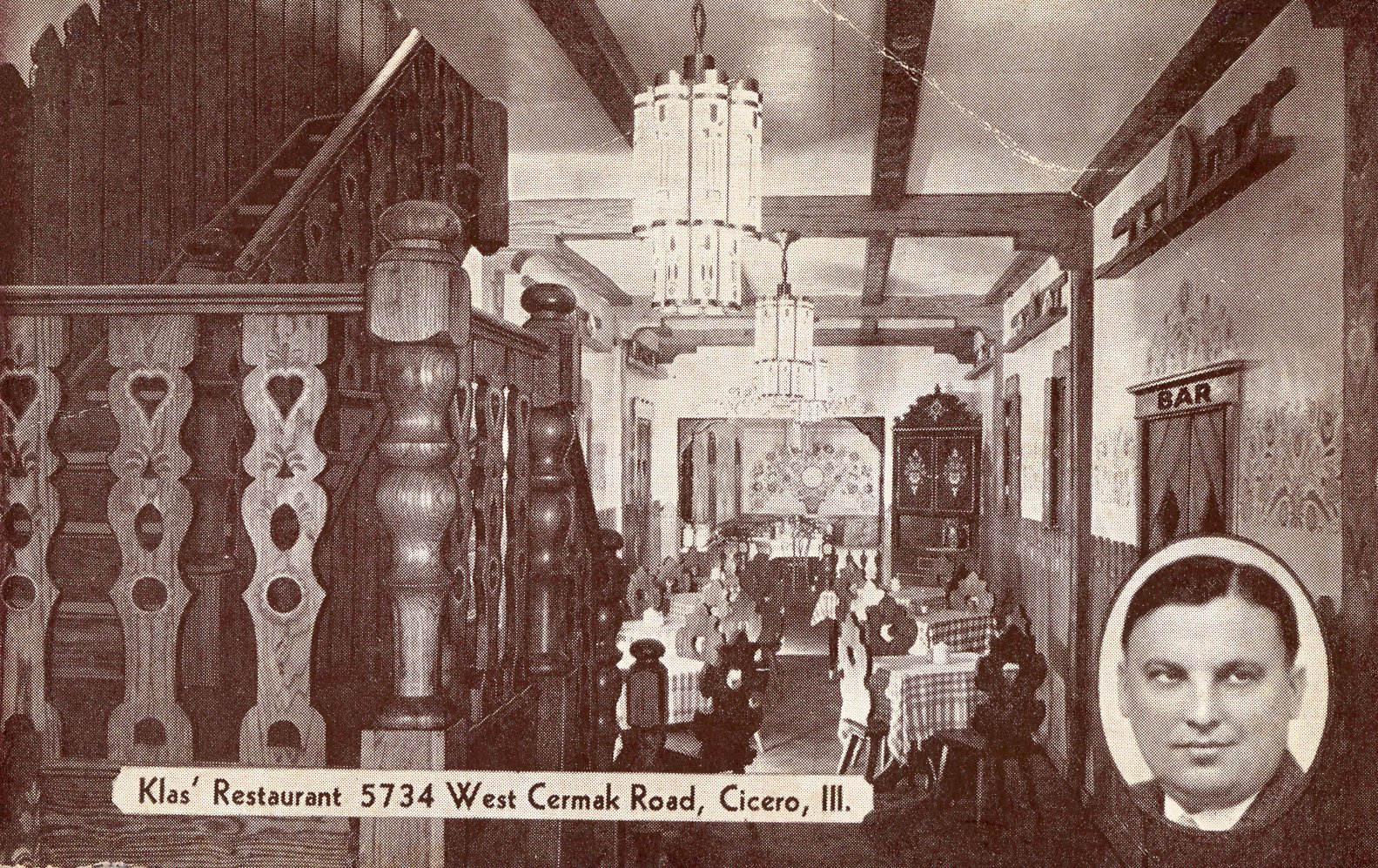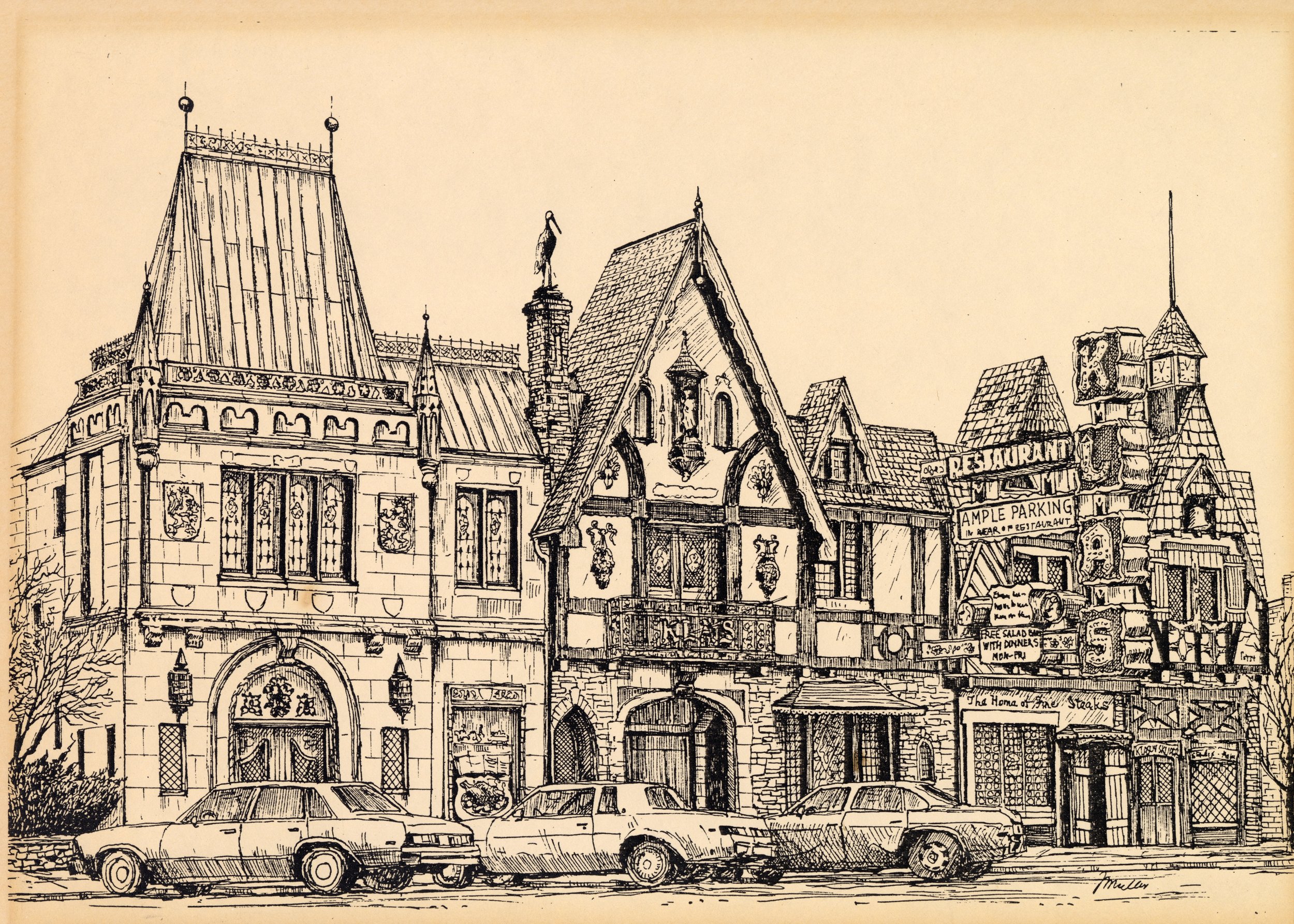From Czech Fortress to Latinx Youth Rock Scene, Klas Was More Than Just a Restaurant
Postcard depicting Klas restaurant from the mid 1930s to the 1940s (image courtesy of Jojo Galvan).
By Jojo Galvan Mora
This summer, after a century of history, fine steaks and community, the Klas Restaurant on Cermak was demolished, and I can’t help but feel that a piece of Cicero went down with it. With its ornate dining rooms, murals reminiscent of a bygone era and stained-glass windows, the iconic Moravian-style building lived many lives—including being the home to Cicero’s DIY punk rock scene. Though the physical space is gone, Klas’s near century-long presence in Cicero still serves as a reminder of the history and changes the town has undergone, and all the complexities that come with it.
If there existed a guestbook signed by every individual who dined at Klas, it would stand toe-to-toe with any white-tablecloth, Michelin-star restaurant in the country. Among its many patrons, the restaurant played host to (supposedly) the Al Capone outfit, former Chicago mayor Anton Cermak and even U.S. Secretary of State Madeleine Albright, along with former President George H. W. Bush. Foreign dignitaries like Petr Nečas (former Prime Minister of the Czech Republic) regularly made appearances, too. Beyond mafiosi and politicians, artists, radicals and entire generations of everyday Eastern European (and later Mexican American) patrons all contributed to the legend of the Czech castle on Cermak.
That iconic building that Klas called home was constructed over several decades, but it all started in 1922, with Adolph Klas, a 36-year-old Bohemian immigrant who worked as a waiter, and his wife Ella. The Cicero restaurant that would come to carry his name had a modest beginning, starting with little more than a lunch counter and a handful of tables staffed by friends and family, but over time, it would become a Cicero institution.
From Czech to “Czech-Mex”
Throughout much of its history, Cicero has been an industrial town. At its height, Western Electric’s Hawthorne Works location employed more than 40,000 men and women around the clock to build communications equipment. This, along with countless other factories, plants, and warehouses, created a boom for middle-class, blue-collar work. These positions were often filled by members of Chicago’s Czech and Slovak communities, who saw fertile opportunity and brought along their families, built communities, and enjoyed a quality of life that was otherwise difficult to attain in Chicago. This growth earned Cicero, and specifically 22nd St. (later renamed Cermak Road), the moniker “Bohemian Wall Street” for the number of businesses that were owned by and served Czechs, Slovaks, and other Eastern Europeans.
Crown jewel among the butcher shops, bakeries and tailor shops was Adolph and Ella’s Klas. Within a decade of opening, the modest operation began to expand, beginning with transforming the lunch counter into a bar reminiscent of a Bohemian lodge tap room. To meet larger demand, Adolph and Ella built on the iconic themed dining rooms, each named for its particular style of decor (the Moravian Room, the Russian/Zhivago Room, the George Washington Room, the Fountain Room, and the Garden Room). With the expansion, Adolph wanted to capture the charm of old-world decor and architecture, while at the same time recognizing new beginnings in America.
Postcard depicting the Klas restaurant bar from around the 1930’s during a time when the restaurant was under renovation (image courtesy of Jojo Galvan).
This balance was achieved by hiring local artisans to adorn every inch (inside and out) of the space with architectural facades and art installations reminiscent of Adolph’s native Czechoslovakia. One such artisan was Gennadi Gordeyev, a Russian emigre, who in 1938 painted a number of the murals that adorned the restaurant’s walls. Beyond murals, master laborers crafted the intricate woodwork inside the restaurant, stained glass windows, and ornate limestone details. Klas reflected the social and financial prosperity among the area’s Eastern European community. The iconic slogan depicted on the restaurant marquee explained it best, “Enjoy yourself. It may be later than you think.” Indeed, Adolph enjoyed his restaurant’s success until his passing in 1962. Ella would follow four years later in 1966. After their deaths, the establishment traded hands a number of times, but remained, much like the area, largely unchanged.
However, during the 1980s and ’90s, as the Latino population in Cicero skyrocketed, Klas found itself at a crossroads. The primary customer base was moving away or aging out. To keep the doors open, ownership sought to appeal to a new clientele. One of the first attempts was marrying hearty Czech cuisine with staple Mexican food. This led to some interesting (or maybe infamous depending on who you ask), so-called “Czech-Mex”creations featured on the menu, with offerings like goulash tacosand duck enchiladas. Beyond culinary interventions, an effort was made to market the picturesque dining rooms for quinceaneras, and the bar stocked cerveza along with the traditional European-style lagers. But nothing seemed to be a major hit. The restaurant wouldn’t find its niche until a few years later, when an entire generation of new Ciceronians came of age and wanted to make some noise.
Restaurant by day, DIY punk rock venue by night
To some extent, Klas was always an entertainment venue. Adolph and Ella regularly brought Czech musicians to take the stage, but no one then could have predicted that Klas would become regionally known for its place in the local punk rock scene dominated by Latinx patrons and performers. Such is the case for Cicero residents Franco Morales and Jorge Anaya, who walked past Klas on a Halloween night and heard live music emanating from inside the building. A proposition, building tour and business agreement later, Klas opened its doors to the area’s budding metal scene—a community that, according to Morales, “started with shows played in local basements, sometimes with up to 10 bands a night.”
The band, Veils of Darkness, plays in one of the many rooms within Klas restaurant on the night of April 19th, 2013 in Cicero, Ill.,(Photo by Jeffery C. Johnson).
It didn’t take long before the shows at Klas drew a steady crowd, and in February 2007, the first Klas Rockfest was organized, bringing local and regional acts to the new venue.
“There was another venue in Berwyn, but we wanted something for us, something for the people here,” said Morales. “Everybody was respectful of the building. We all knew it had been there for a long time.” And, in true DIY punk rock fashion, Morales was quick to mention that at the end of the night, the venue had to be converted back into a restaurant.
“We’d set up the stage early in the day and break it down at night … we would have to put the chairs and tables back at the end of the night so the restaurant could open in the morning.”
For more than half a decade, weekends at Klas were filled with metal and mosh pits, providing a release for an entire generation of young Ciceronians. Many of the artists, like Morales, who performed during the venue’s early days weren’t even 21. Attendance levels were significant enough that some nights featured two stages and a DJ going across the restaurant simultaneously. By all measures, the shows were a success.
Klas provided a space for a generation of youth in Cicero to express themselves. Youth gather at Klas on the night of May 25th, 2013 where an art show, DJ music, punk show and a Czech dinner all took place in different areas of the restaurant (Photo by Jeffery C. Johnson).
Local photographer and historian Jeff Johnson spent many evenings documenting the atmosphere at Klas through his camera lens. He recalls a specific night where a show was happening in one of the dining rooms, while in another, a group of seniors were sharing a traditional Czech meal, and he was fascinated that both gatherings could occur at the same time and in the same place within mere feet of each other. Nowhere else could such a thing happen but Cicero.
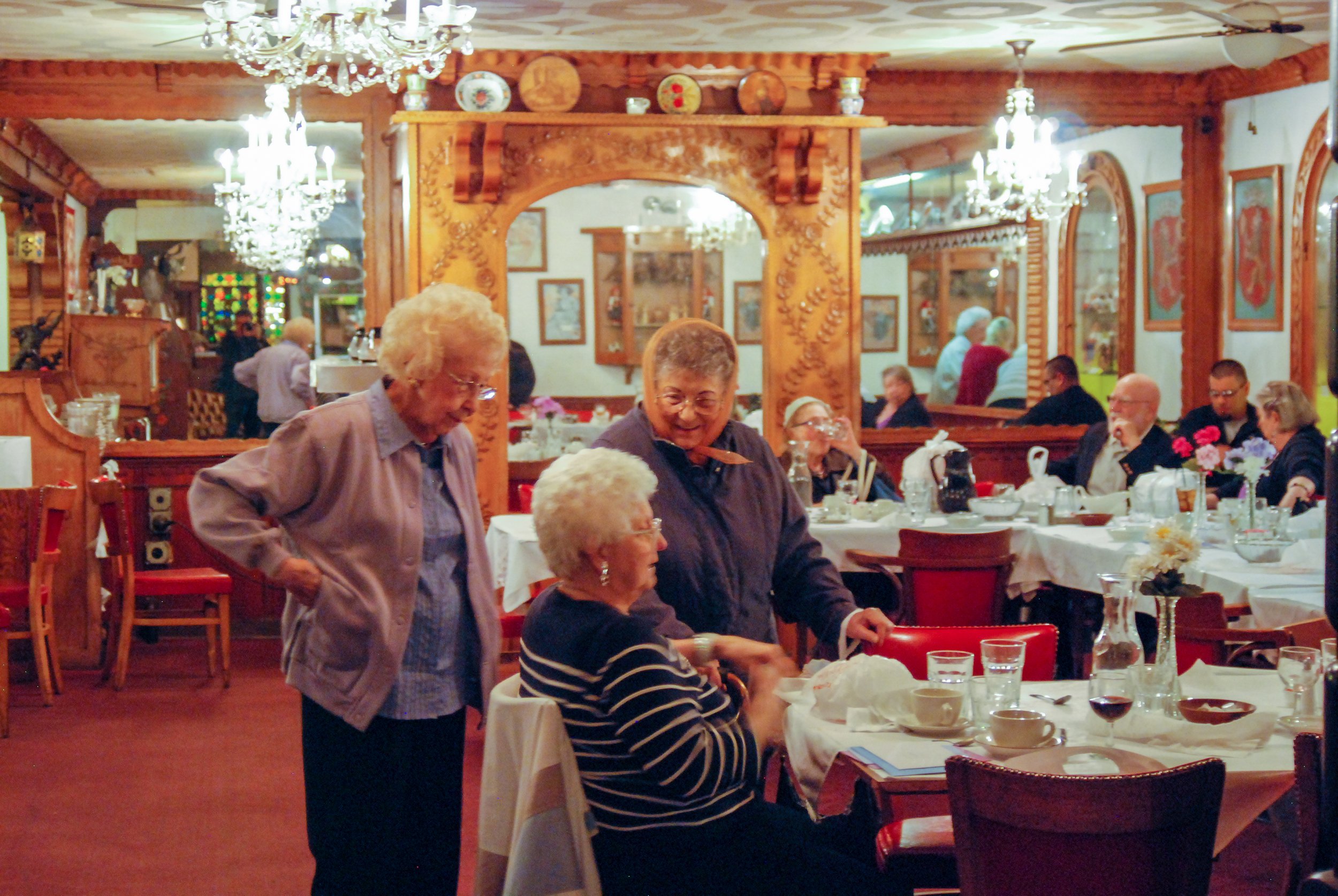

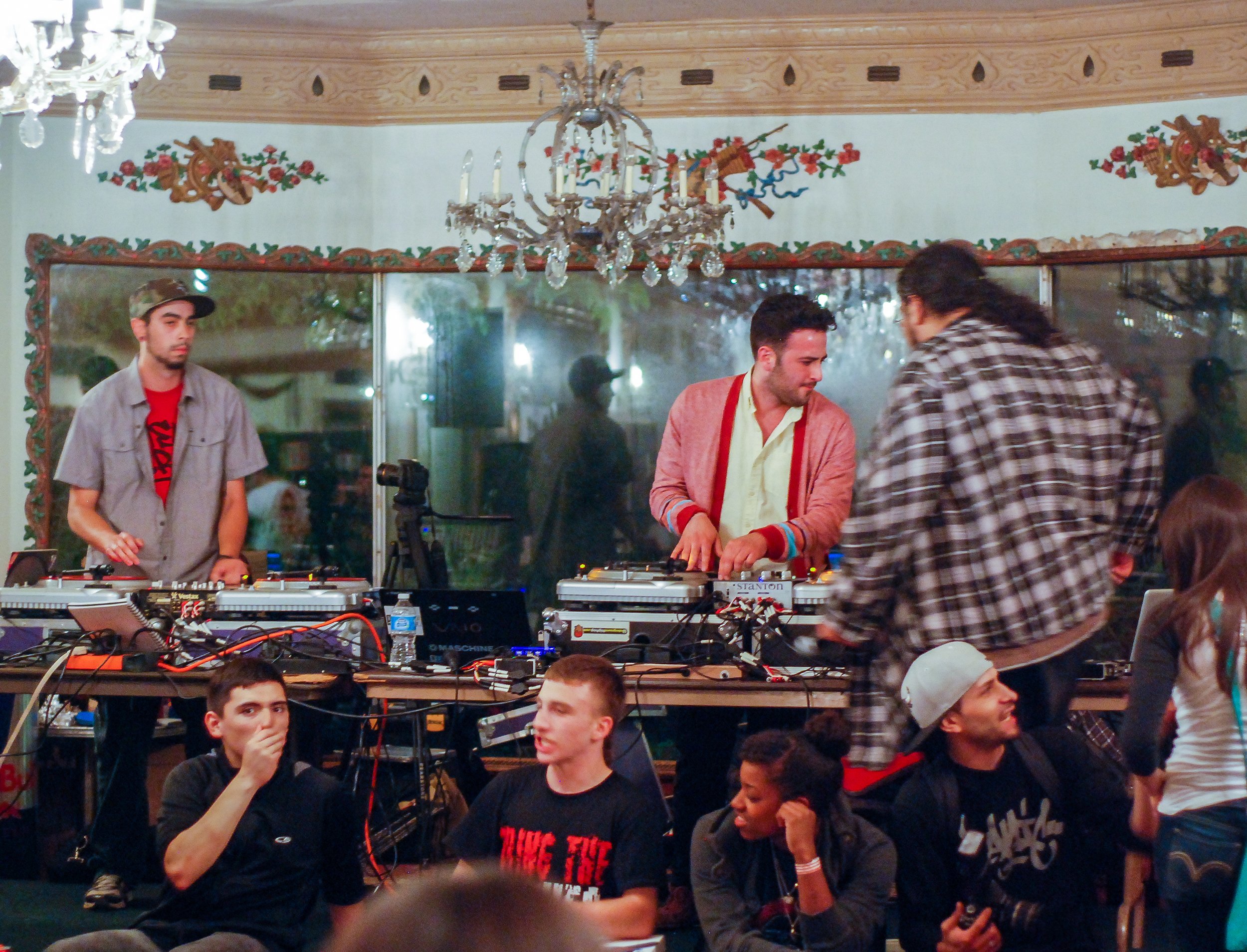
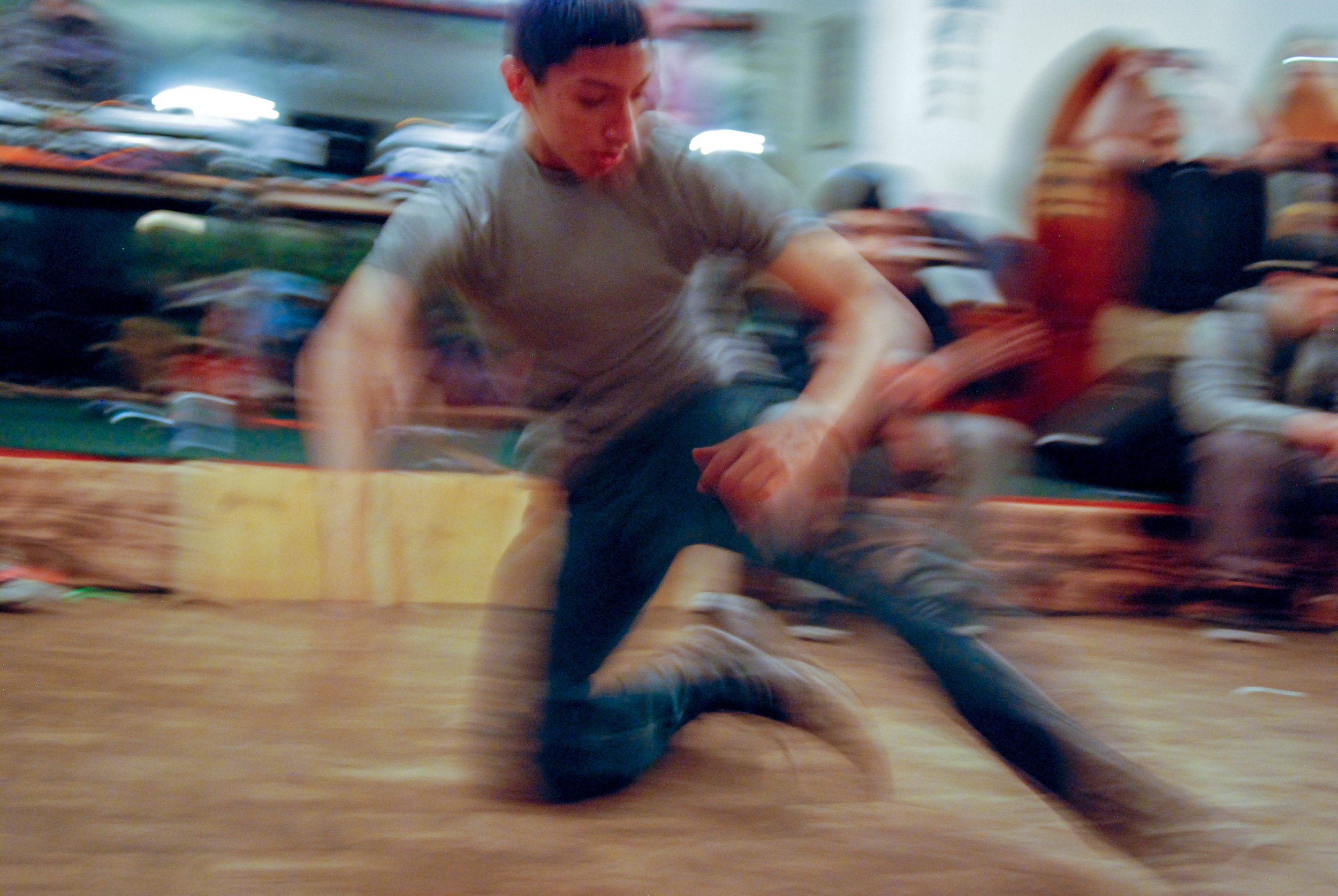
Three different types of events take place on the night of May 25th, 2013 at Klas. One room held a traditional Czech dinner enjoyed by seniors while a DJ music show, punk and art show were held in other rooms in the restaurant (Photo by Jeffery C. Johnson).
Along with the new scene, restaurant ownership tried keeping a local Czech presence with regional folk music acts, art fairs and visits with the mobile Slovak consulate. This double identity kept the restaurant by day, venue by night going for a few more years, but the writing was on the wall. The last Klas Rockfest took place in May 2013, with a few additional interspersed shows until the restaurant closed. Ultimately, Klas shuttered its doors for good in late 2016, citing financial difficulties in keeping the massive building operational. After closing, the building fell into disrepair, and after several unsuccessful attempts at a revival as a museum and community resource center, the building was sold and demolished in summer 2022.
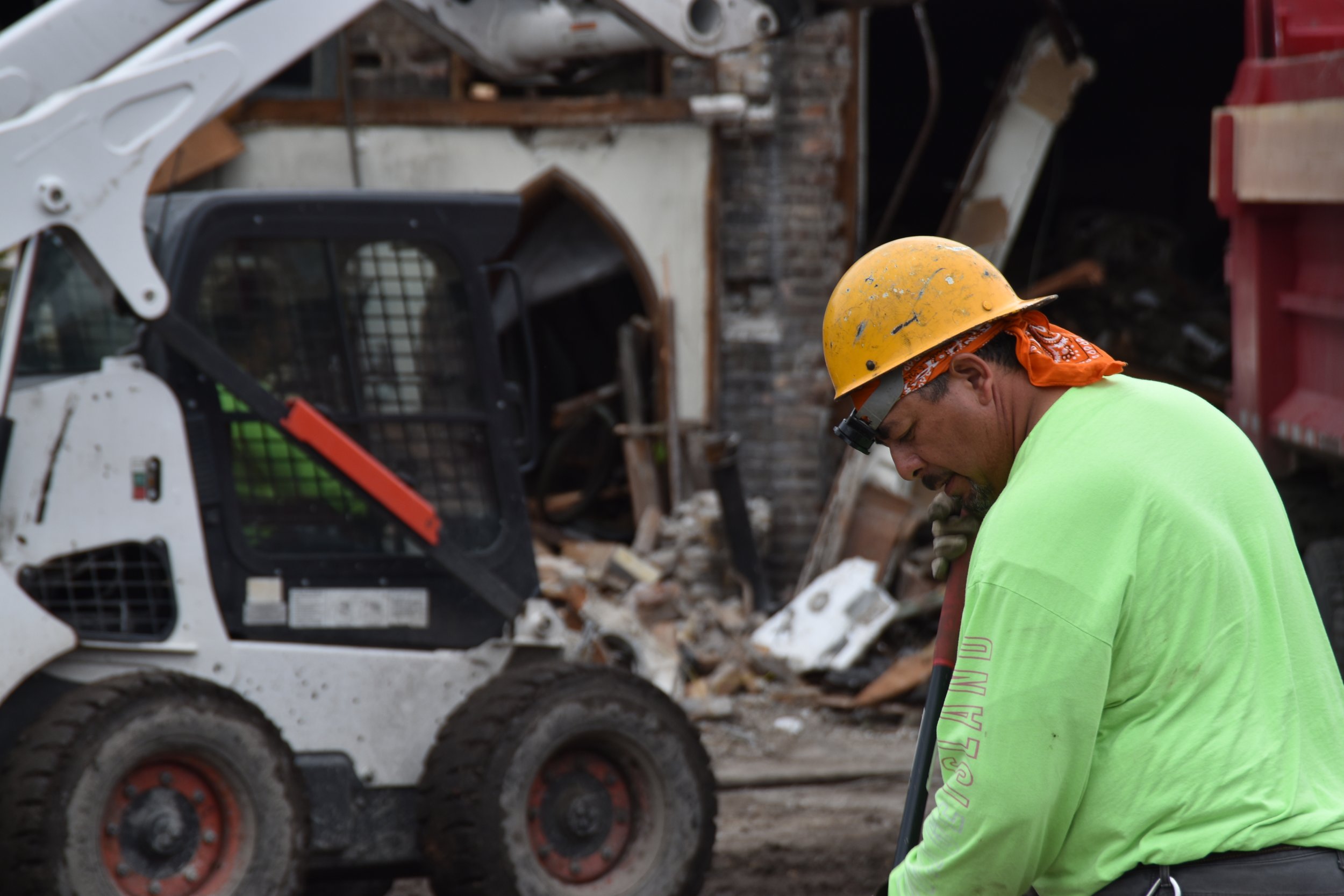
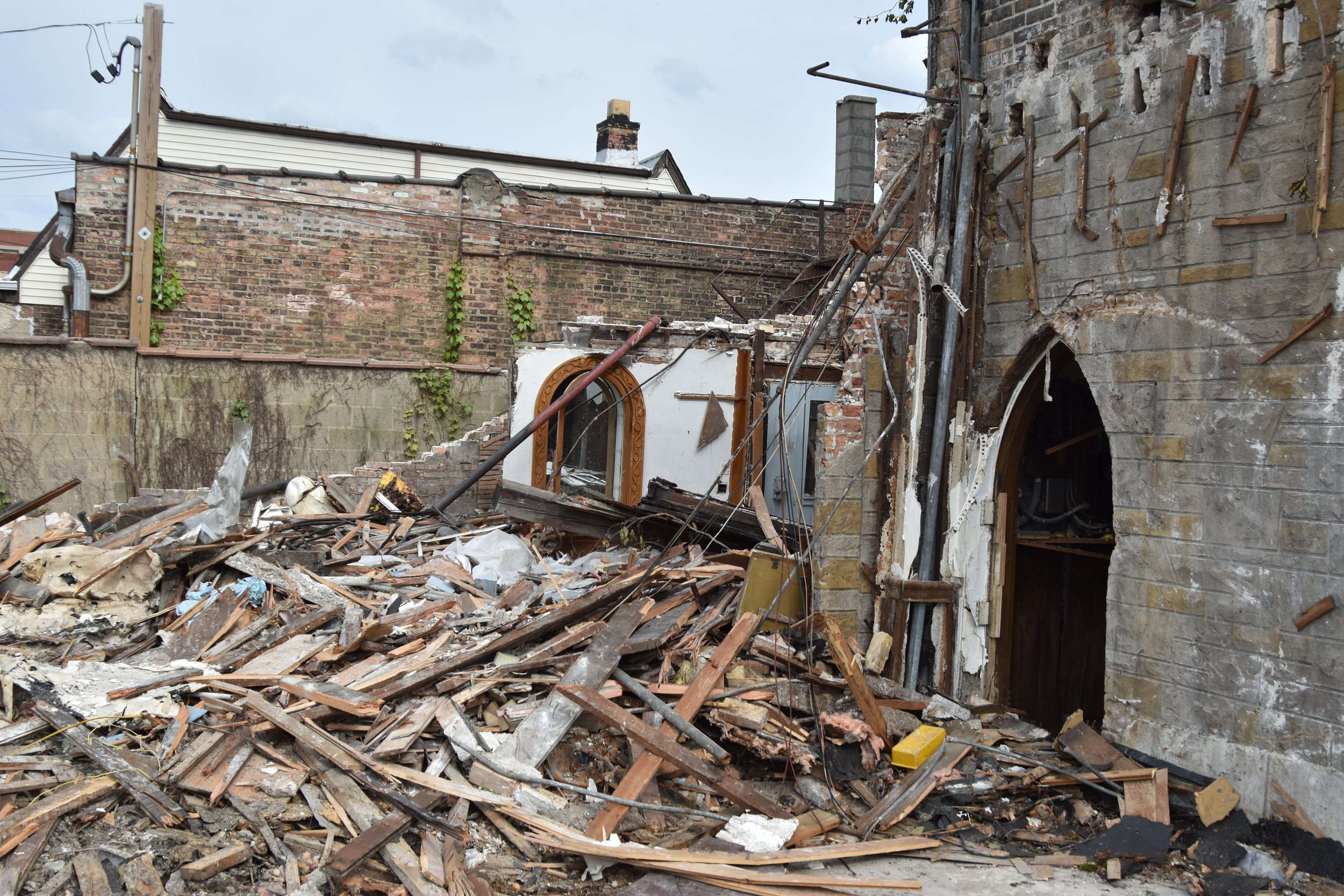
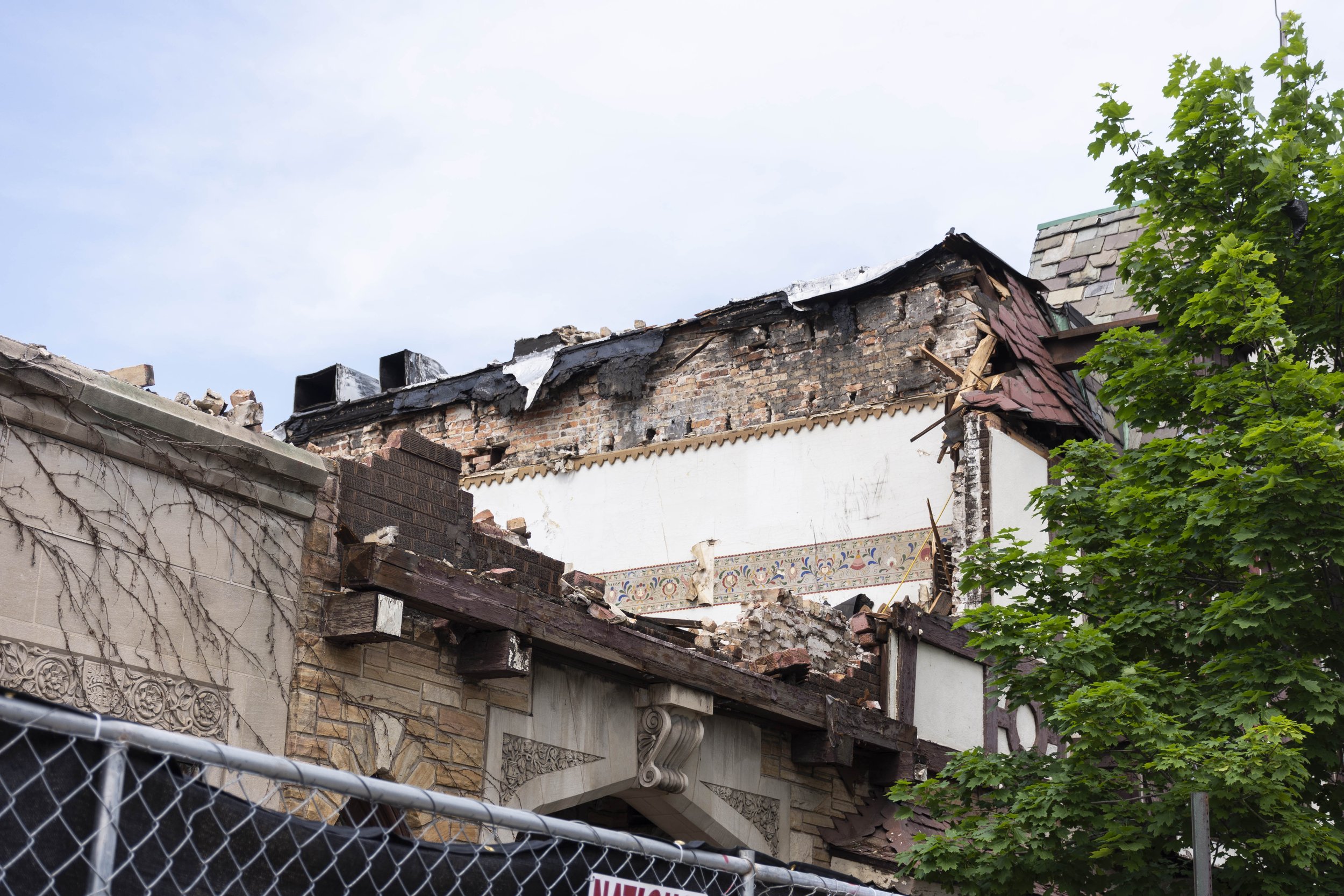
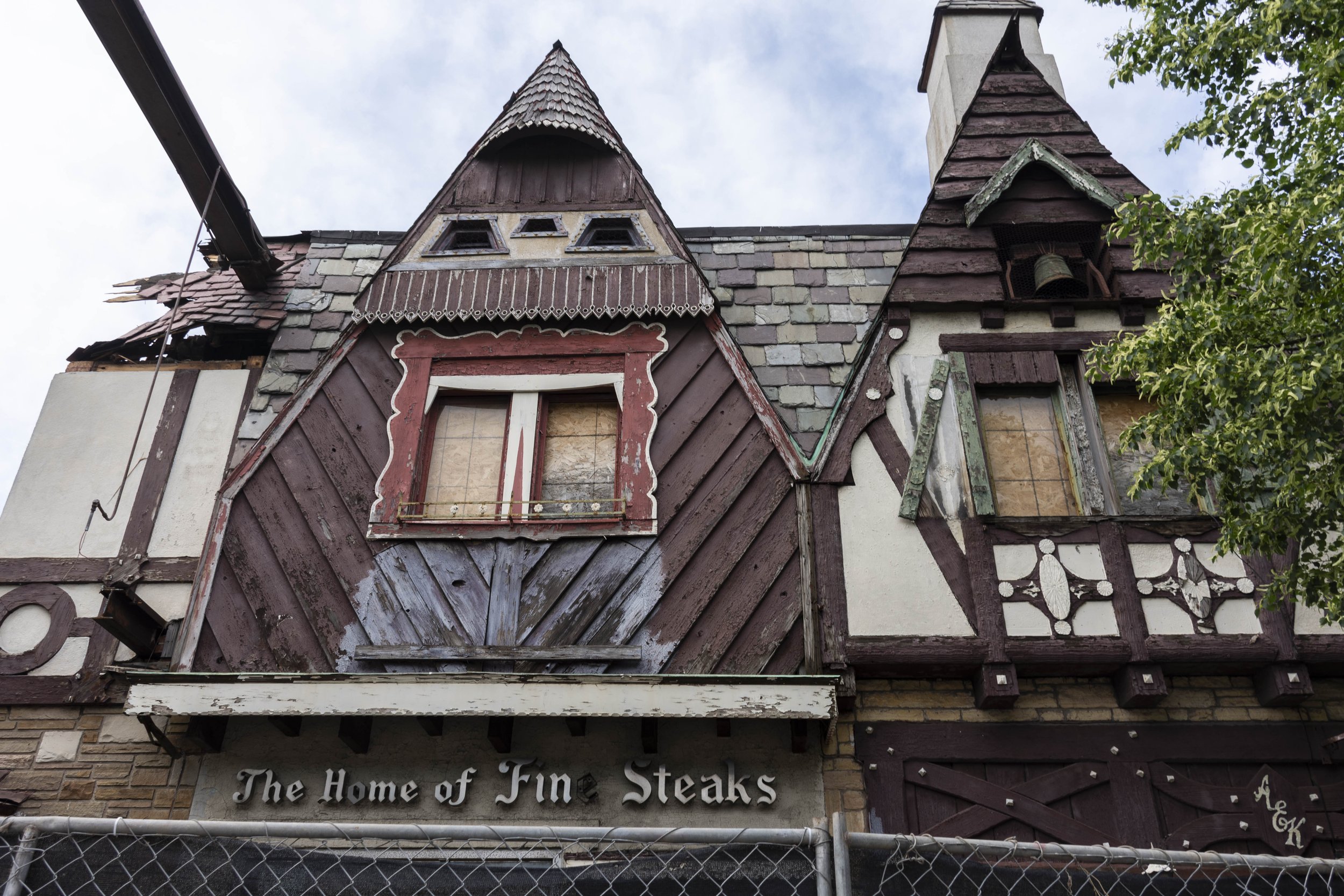
THE First and second photos took place during a demolition day on May 26th, 2022 (photos by Jojo Galvan) and the third and fourth photos were the remains of the restaurant on August 16th, 2022, before the rest of the building was demolished (photos by April Alonso).
Cicero residents past and present gathered outside the construction site to watch the restaurant come down. A significant portion of the restaurant’s ephemera was left inside when the doors closed. Glassware, signage and even a few stained glass windows were hauled away in dump trucks. But not all was lost. Some of the restaurant’s more memorable elements were saved by those with connections to the locale. Irene Hogstrom, granddaughter of Gennadi Gordeyev, managed to salvage a significant number of the murals her grandfather painted along with other memorable elements of the edifice. She plans to donate the art and artifacts to the Chicago History Museum and the National Czech and Slovak Museum and Library in Cedar Rapids, Iowa, in an effort to preserve the history of her family and Czechs in the area. For many others, like Morales, who is now 31, Klas lives on in memory through all the nights spent there and the friendships made along the way. When asked if there's any chance of the band getting back together, he laughed and responded, “I still jam with some of those homies.”
The demolition of Klas is the latest line in a long and complicated narrative on Cicero’s preservation of its architectural heritage. It signaled the end of an era and the loss of an edifice that could never be replicated today. For a town steeped in history, with buildings often acting as the last vessels for telling its story, demolitions seem to be a regular occurrence. Klas told the story of the population changes in Cicero, but its story forces us to look beyond narratives of ethnic succession and instead to acknowledge the individuals who labored over businesses like this one, where they were building to last.
Pen artwork drawing of Klas Restaurant (courtesy of Jojo Galvan).
***
What are your favorite Klas memories? Send us an email or text with your old photos, flyers or anecdotes for a chance to be featured. Our email is info@ciceroindependiente.com and our number is 708-317-8078.
Jojo Galvan Mora is a historian, and interdisciplinary museum curator based in Chicago. A longtime Cicero resident, he is currently pursuing a PhD in Urban and Public History at Northwestern University in Evanston.
This article was edited with support from Heidi Samuelson, Ph.D., editor at the Chicago History Museum.
Want to read more stories like this? Consider making a donation to support our work. Your money goes directly towards paying journalists of color to report on local news.
SUBSCRIBE
Bringing you news from the 60804
We respect your privacy and will only use your information to send you our latest posts.

